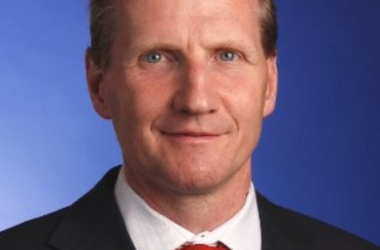Just days before the deadline, the EU and US struck a provisional trade accord on 27 July, sidestepping a full-blown tariff clash between two economic giants. The agreement places a 15% tariff on most EU exports – a figure subsequently included in the global tariffs executive order President Trump signed on 31 July.
Both sides have framed the agreement as mutually-beneficial, with the EU’s rate lower than the 20% tariff Washington imposed and later suspended in April, and well below the 30% that the Trump administration threatened on 12 July. Yet, despite other ‘wins,’ such as tariff-free treatment for aircraft parts, many in Europe see the deal as skewed, particularly given Brussels’s eye-watering energy import commitments and the conspicuously-vague terms for US exports.
Beyond energy, Washington has pushed for greater EU food market access in recent months. As the bloc struggles to curb obesity and chronic disease, a wave of lower-quality, less-regulated US food imports poses a serious risk, meaning that the Commission must stand firm in upcoming trade negotiations while advancing effective internal nutritional health policies.
Europe’s dangerous exposure to US strong-arming
EU officials have attempted to cast the deal as maintaining the status quo, claiming the 15% tariff includes the average existing US rate of 4.8%; however, in reality, the trade-weighted average on EU exports was just 1.6%. “Trump worked out exactly where our pain threshold is,” said one EU ambassador, while Sweden’s trade minister Benjamin Dousa has rightly reminded that “the United States is now introducing the highest tariffs on Europe in almost 70 years.”
Sweden is not alone in voicing concern. France’s Europe minister, Benjamin Haddad, has called the agreement “unbalanced” and “not sustainable,” while his Prime Minister, François Bayrou, has blasted the deal as “submission” to Trump’s America. Criticism has focused in particular on the deal’s call for $750 billion in EU imports of US energy over three years – a target dismissed by analysts as “delusional” and implausibly-high.
While the agreement may have provided temporary stability for global markets and EU businesses, Washington has been left with significant headroom to press for more concessions in further negotiations to flesh out this political roadmap, with Brussels showing little willingness to push back despite its tough talk on its ‘trade bazooka.’
EU food market in Trump’s crosshairs
Speaking about the deal, von der Leyen has stated the EU would offer greater market access to US companies, while Trump claimed “we have the opening up of all of the European countries.” Earlier this year, the US president decried the EU’s €18 billion agri-food surplus, accusing the bloc of rejecting US farm goods despite America taking “everything from them,” opening the possibility that Trump will press for enhanced EU food market access next.
Despite Trump’s claims, EU tariffs are not the obstacle to American staples like Texan beef, Kansas wheat and Kentucky chicken, but rather the EU’s stricter phytosanitary and consumer standards. The EU’s precautionary principle requires proof of safety before products are approved, while the US follows a looser, risk-based model where nearly anything goes unless proven harmful. Consequently, US beef is capped at 35,000 metric tons due to the EU’s ban on hormone treatments, while American chicken is barred over antimicrobial washes the EU rejects.
But culture matters as much as regulation. Most Europeans simply do not want hormone-fed beef or chlorine chicken. For all its output, the US lacks the culinary cachet of Europe’s small-scale producers, who boast five times more protected “geographical indications.” In short, the EU excels at selling GI heritage products that American palates eagerly embrace, while EU consumers often recoil from what they see as industrial, poorly-regulated products.
Domestic EU food health policy concerns
Given the EU’s rising obesity and NCDs epidemic, Europe cannot afford to sell away the EU market’s strong regulatory standards to appease Trump, particularly as member-states are exploring highly ineffective nutritional health policies domestically.
Consider Nutri-Score, the much-contested front-of-pack nutrition label that continues to cast a shadow over Europe’s own gastronomic treasures. Designed to guide consumers toward healthier choices, it has instead provoked backlash for penalising key GI products like cheeses, cured meats and olive oils that are central to both the EU’s culinary heritage and its food export economy.
Countries like Greece, Hungary and Portugal have criticised Nutri-Score for distorting consumer behaviour by unfairly flagging nutrient-rich traditional foods as unhealthy. Multiple studies confirm this risk of misperception, with researchers increasingly questioning both the methodology and the independence of studies backing the label. Politically, the tide has turned equally dramatically – after fierce member-state resistance, the Commission quietly shelved plans to endorse Nutri-Score in its updated agricultural strategy earlier this year.
Yet while Nutri-Score is off of the Commission’s table, another flawed policy is rearing its head: health taxes. A recent exploratory study by the Commission’s taxation directorate – likely aligned with the WHO’s new “3 by 35” campaign – could revive proposals to tax HFSS products across the EU. The logic may sound simple, but the results rarely are.
From Denmark to Mexico, international experience shows that such taxes often fail to deliver health benefits while hitting lower-income households hardest. Consumers adapt, finding cheaper or untaxed substitutes, while core health metrics barely budge. A sweeping tax on food and drink risks repeating past mistakes: punishing the most vulnerable and delivering little meaningful change.
No margin for error
Looking ahead, Europe’s path to better nutrition must be smarter than labels and levies. Taking inspiration from its stand on Nutri-Score, the Commission must apply the same evidence-based policy approach to health taxes, which like France’s divisive nutritional label, do not deliver the health results promised on the tin.
Instead, policymakers should focus on initiatives proven to help tackle obesity and NCDs, such as making physical activity more accessible to low-income communities and improving nutritional education, thus empowering citizens to live healthier rather than imposing ill-adapted, top-down solutions.
Moreover, with Trump’s Washington pushing for greater food market access – and notoriously volatile in trade negotiations – the risk of flooding Europe with poorly regulated imports is real. In the decisive coming weeks, the Commission must hold the line to prevent trade compromises from undermining Europe’s fight against obesity and chronic disease.






